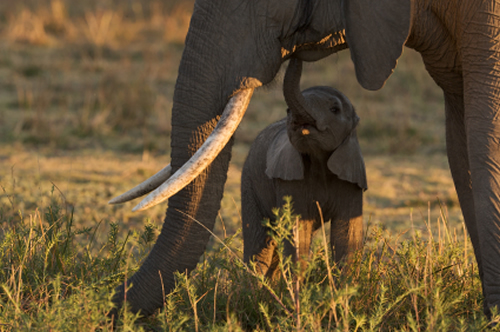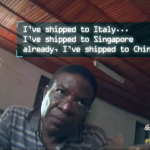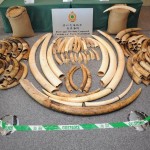Guest blogger: Susie Watts

The problem with the elephant debate in a CITES context is that the political symbolism of the African elephant has always blinded Parties to the horrific consequences of putting a commercial value on the species’ body parts.
Elephants are often referred to as “flagship” species and nowhere is this more true than in the CITES debate over “sustainable utilisation”. It seems pretty clear to me that, at some point in the very early 1990s, senior members of the CITES Secretariat, along with certain international NGOs, decided that if they could prove to the world that sustainable use works for elephants, they could prove that it works for any species. The elephants have been the poster child for that difficult and much wider debate ever since.
It was all about the timing, in my view. In 1987, African elephants were on Appendix II and a CITES-commissioned “ivory quota system” had been devised by a Zimbabwean lobbyist. Predictably, it had not reduced elephant poaching or illegal trade – far from it – and it was estimated that 80-90% of all ivory in international trade at the time had been taken from poached elephants. By 1989, elephants were being killed at a rate of 2,000 a week. Just as we were beginning to recognise the sheer scale of CITES’ failure to control the “legal” trade, countries in Southern Africa were putting a great deal of time and effort into developing the concept of Community-based Natural Resource Management. CAMPFIRE in Zimbabwe was in its infancy and all the chatter in Southern African wildlife circles at the time was around the mantra of “use it or lose it”. The war in Zimbabwe – a war that was essentially fought over land – was still a vivid memory and land use issues were dominant in the thinking. How could the true value of land be realised and livelihoods supported without the damaging effects that livestock caused? How could those people who had been pushed into marginal areas during the colonial era make a living from land that was often unsuitable for cultivation or livestock?
Unfortunately, those very legitimate concerns were translated into some very woolly thinking and, it has to be said, by some clever manipulation of the truth. For example, it was repeatedly stated that the ban would deprive communities of their livelihoods because money from the ivory trade was being used for community wildlife projects, when the reality at the time was that all money earned through the sale of ivory went directly into central Treasury coffers in every Southern African country. The debate over international trade in ivory was characterised as one between rich and poor, the developed and developing world. The fact that it was Tanzania that proposed the Appendix I listing was conveniently overlooked, as were the pro-ban views of a large majority of African elephant range States.
As we geared up for CoP7, having lobbied ourselves into the ground for Appendix I, there was a head-on collision between what was clearly the only answer – a global ivory ban – and the emerging ideology of CBNRM. That collision is what has determined the course of the debate ever since. Elephants had no chance whatsoever of being seen as just another species that had been grossly over-exploited and needed help from CITES. Instead, they became a political football on a global scale.
In October 1989, concern for the elephants overrode other considerations and the Appendix I listing was adopted. The was partly because of the sheer clarity of the pro-ban argument and partly because the southern African countries’ PR machine had not yet been fired up. The hiring of very expensive PR companies in London would come later! After all, this was not about money from ivory sales – it was all about winning the argument.
It was only after the Appendix I listing that the battle really began, and it continues to this day. After that initial victory in 1989, those of us who have always recognised the devastating effects of trading ivory internationally have, overall, been on the losing side. The concept of “sustainable utilisation”, like motherhood and apple pie, must be a good thing, mustn’t it?. Previous Secretary-Generals of CITES liked it because it appeared, superficially at least, to comply with the pro-South policy-making ideology that emerged at the 1972 Stockholm Summit and that has defined subsequent Earth Summits. Parties like it because they think it will alleviate poverty in their countries, create jobs and even prevent political instability. What’s not to like? And of course, many international NGOs are still trying to make it work. Having put their careers and reputations on the line for it, they have had to exert a significant amount of control over the debate ever since, despite the lack of evidence to show that legal wildlife trade – or, indeed, trophy hunting – has made the slightest difference to the poverty index anywhere in the world. But, these days, a funding proposal that does not contain the phrase “millennium development goals” isn’t worth the paper it’s written on.
And so, far from acknowledging the need for a corporate re-think, or recognising that international trade in high-value wildlife products has achieved little, apart from threatening the very existence of the species from which they’re taken, the trade lobby continues its fruitless attempts to push a square peg into a round hole. Since the 2008 China ivory debacle, we have been treated to the spectacle of furious back-pedalling and re-writing of history on an almost Orwellian scale. It would be amusing were it not for the thousands of elephants that have died as a result of this obstinate unwillingness to admit that ivory cannot be traded sustainably and nor, I’d be willing to bet, can any other wildlife product of similar or higher value in east Asian markets.
Whether or not the trade lobby decides to take it on the chin – and publicly acknowledge the spectacular failure of all attempts to separate the legal from the illegal ivory trade – has yet to be seen. For the time being, elephants remain a flagship species – this time for the credibility of CITES itself.
Susie Watts is an independent wildlife consultant. She has worked on wildlife trade issues for 25 years and contributes to the work of The Conservation Action Trust. opinions presented in this piece are those of the author alone, and not those of any NGO with whom she is, or has been, associated. Article reprinted from Wildlife Extra with the author’s permission.




